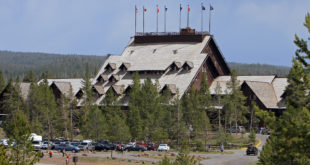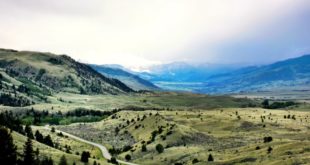Around Yellowstone, almost any wildlife management action will create an opposite and not always equal reaction. In this case, the announced hazing immediately brought forth complaints from several environmental and wildlife groups, who sent a joint letter to Montana governor, Brian Schweitzer. They are demanding that the hazing cease immediately, and that the bison management plan be amended to allow the bison to graze in areas outside the park that are not used by cattle.
This has not been a good winter for the Bison Management Plan, as more than one half the Northern Yellowstone herd was either killed by hunters, government slaughter, or the vicissitudes of winter. As a result, messing with the bison, always a sensitive issue, is particularly sensitive this year. Although the park service maintains that the remaining 2,100 (or so) bison in the herd is more than sufficient for long-term survival, the spectacle of the largest slaughter of bison since the 1890’s hasn’t helped the program’s image. It has also helped to once again highlight the fact that animals have no sense of human boundaries, and will do what they need to survive – including wandering into grasslands at lower elevations in search of food.
The environmental groups are arguing that especially this year, driving the bison back into the park – much of which is still snow covered and where there is very little new grass – imposes even more stress on this small herd. But the larger and more important context of their argument is that these and other bison should be allowed to roam during winter into areas where they can find food and do not endanger cattle by infecting them with brucellosis.
It’s another chapter in a highly repetitive story, with the bison performing their usual role of innocent victims or unruly carriers of dread disease.
 Yellowstone Insider Your Complete Guide to America's First National Park
Yellowstone Insider Your Complete Guide to America's First National Park





